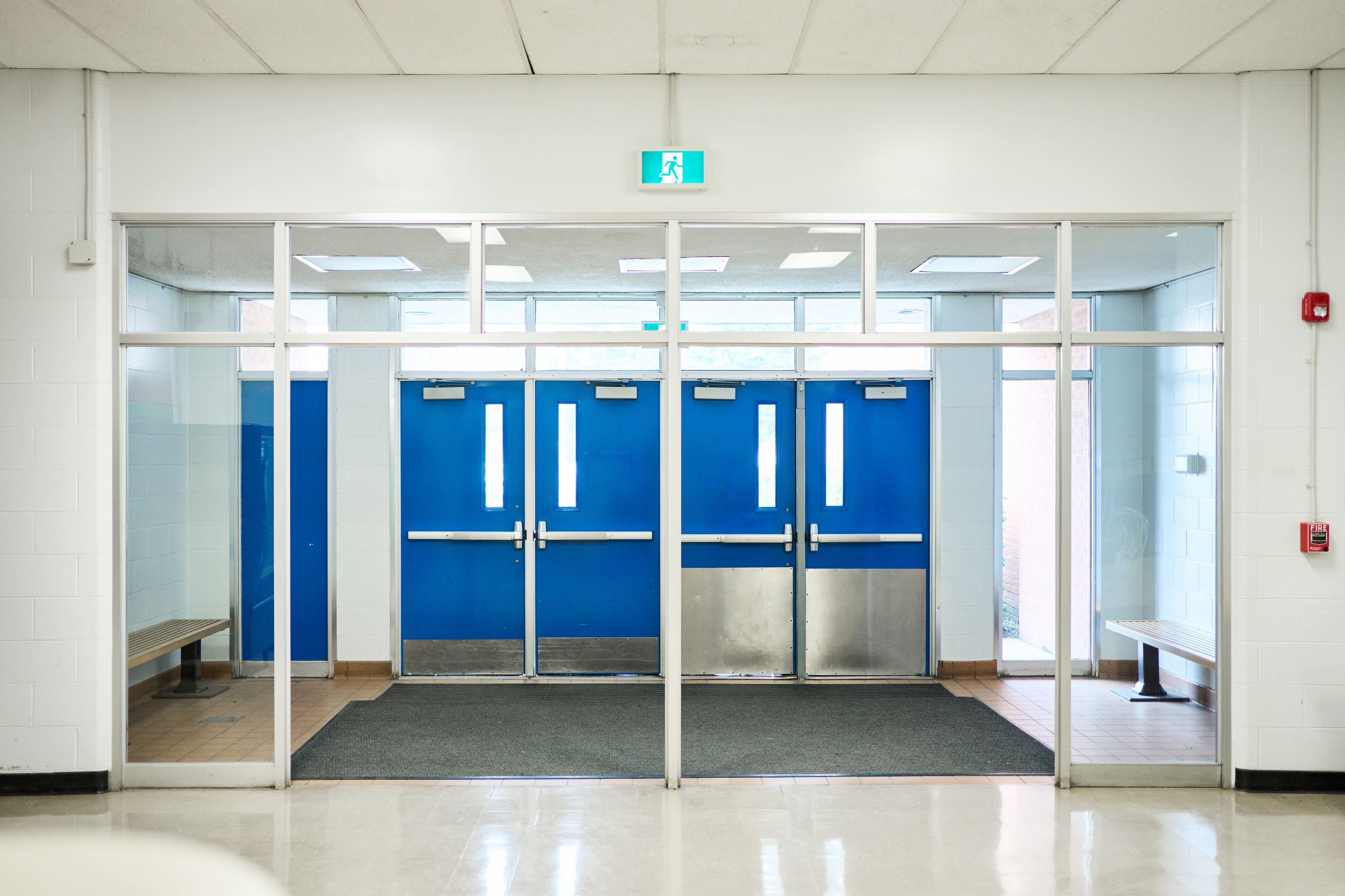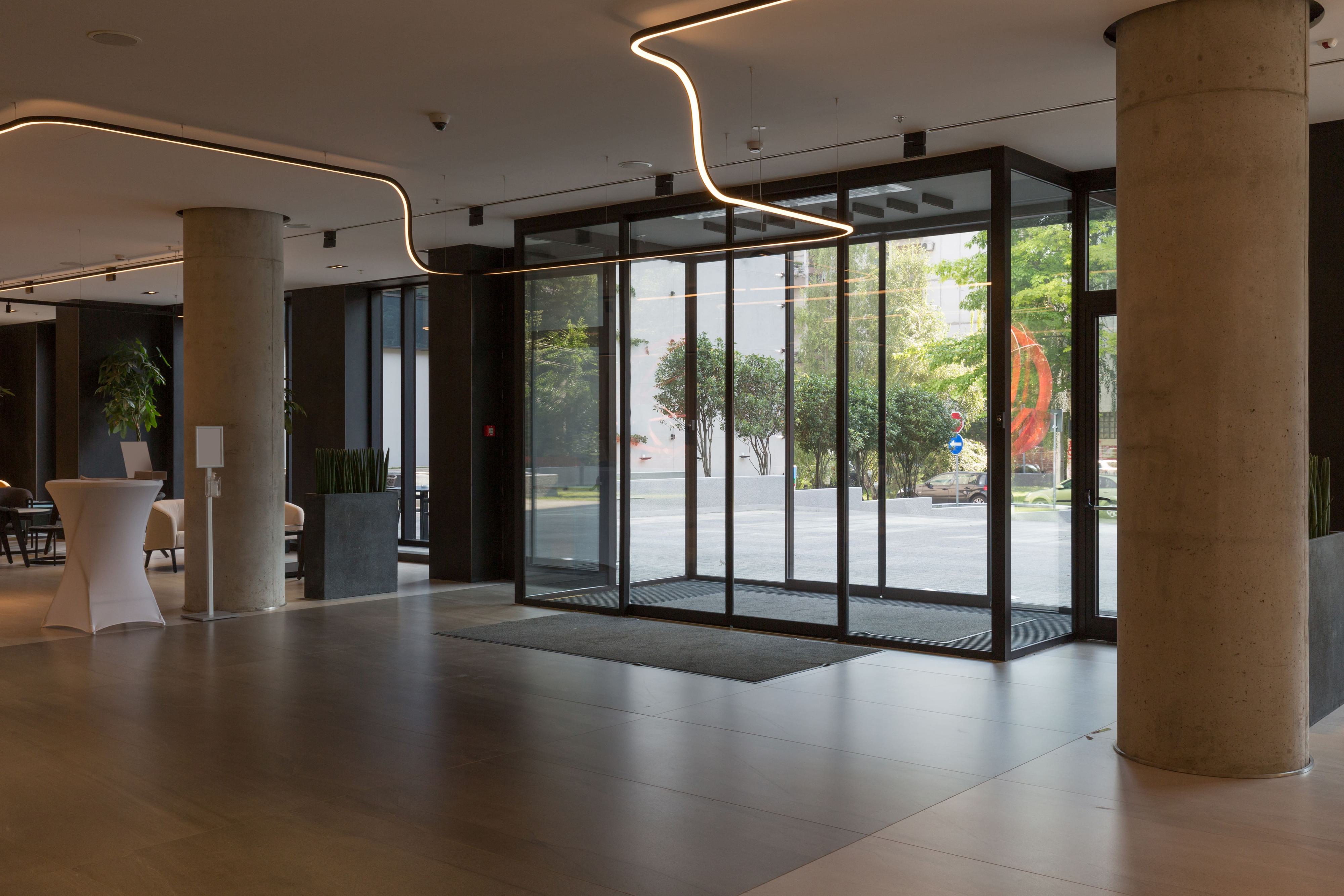How Insulated Pedestrian Doors Can Improve Your Energy Efficiency
Energy efficiency is something every building owner or manager thinks about. Heating and cooling buildings, especially large buildings with lots of rooms, can cost a lot of money on the utilities bill. Finding ways to improve your energy efficiency can make a big difference in how you operate.
Another factor that you need to think about when it comes to the layout of your building is the pedestrian doors that are used to control traffic. Pedestrian doors are used to provide access between different areas of the building. Pedestrian doors include the entry and exit doors for any building, such as a retail space. Because of this, a good way to improve the energy efficiency of your building can be to install insulated pedestrian doors.

Insulated Doors 101
When you’re doing research into how good a given door is for your energy efficiency, you need to learn two numbers: R-value and U-value. These numbers measure how well the door prevents heat energy transfer.
R-value
R-value is the more common number. R-value measures how well a material can reduce the flow of heat. A higher R-value means the door is better at preventing heat from transferring into or out of your space.
U-value
U-value is the inverse of R-value. This number is a measure of how quickly heat transfers through a given material. In this case, a lower U-value is better.

Update Your Pedestrian Doors for Better Energy Efficiency
Commercial and industrial facilities make extensive use of pedestrian doors. They can be customer and staff entrances, automatic doors, or even fire doors. Upgrading your pedestrian doors to insulated doors can have drastic effects on the overall energy efficiency of your building.
Reduce Loss of Heat to Outdoors
Keeping a comfortable environment for the occupants of your building is a struggle when you keep losing heat to the outdoors through insufficiently insulated external pedestrian doors. Updating them to insulated doors can save a lot of money on heating and cooling costs and you’re no longer losing as much energy to the outside.
Heat Only Particular Sections
Do you really need to heat the whole building? If you have a large building but only need heat in certain sections, for example, an office building where some of the parts are not currently in use, it is a big waste of energy to heat the empty parts. Insulated pedestrian doors can help you contain the heat to the necessary sectors, saving you money on heating costs.
Reduce Noise Levels
Insulated doors provide more benefits than just energy efficiency. They also work to dampen noise. For buildings in noisy areas or that have loud processes going on within, this noise reduction can be very desirable. It may also increase the property value of your building.
Increased Comfort Levels
The comfort level of the occupants of any building is important. Insulated pedestrian doors can reduce drafts and help you keep a more consistent temperature, thereby improving the comfort of everyone inside.

What Makes a Door Energy Efficient?
There are several components that go into making a pedestrian door energy efficient. These parts include:
Materials and Core
The material that a door is made from can make a massive difference in how energy efficient it is. For pedestrian doors, the most effective materials are steel or fibreglass with a polyurethane foam core. This kind of door can offer up to five times the insulating value compared to wood.
Weatherstripping
Magnetic strip weatherstripping can greatly improve your door’s energy efficiency by sealing off the area around the door and preventing air from escaping.
Door Lites
Doors with windows, also known as a door lite, need at least two layers of glass with low-emissivity coatings or low-conductivity gases to meet your energy efficiency expectations. Glass has a much lower R-value and so it needs to be properly built in order to offer the same level of energy efficiency.

What About All-Glass Automatic Doors?
As previously mentioned, glass is not as good at retaining heat as other door materials. If you have an all-glass pedestrian door, perhaps as an entry for a storefront or apartment building, you may be losing a lot of heating energy through the glass.
Glass doors should have at least two panes of glass, and preferably three, with low-emissivity coatings and/low-conductivity gases between the panes.
Creative Door Services™ is the Go-To Source for High-Quality Pedestrian Doors
Finding the pedestrian doors that match your insulation and budgetary needs doesn’t have to be a chore. At Creative Door Services™, we carry some of the best and most energy efficient pedestrian doors in the business. We are exclusive dealers in Western Canada for Wayne Dalton brand doors, who manufacture some of the best insulated pedestrian doors in the business.
Planned Maintenance for Pedestrian Doors
Even if you do have energy-efficient insulated pedestrian doors, they can wear out over time and lose their efficacy. Planned maintenance can help ensure that your doors continue to be as energy-efficient as possible. Catching problems early on can save you a lot of money on repairs and wasted energy costs.
At Creative Door Services™, we have trained technicians who will test and inspect your door systems, letting you know if there are any repairs that are needed. We offer comprehensive planned maintenance programs that can help you stay on top of any care needed.
Contact Creative Door Services™ Today
When you’re looking for high-quality pedestrian doors to install in your building, you can rely on Creative Door Services™. Whether you want hollow metal doors or automatic doors, you can count on us to provide you with the most energy-efficient models available so you can improve the traffic flow of your building while also saving money on your heating and cooling costs, improving the comfort level, and reducing excess noise.
Contact us today for more information about our services and products. We have locations in Kelowna, British Columbia; Vancouver, British Columbia; Calgary, Alberta; Edmonton, Alberta; Fort McMurray, Alberta; Regina, Saskatchewan; Saskatoon, Saskatchewan; and Winnipeg, Manitoba.

